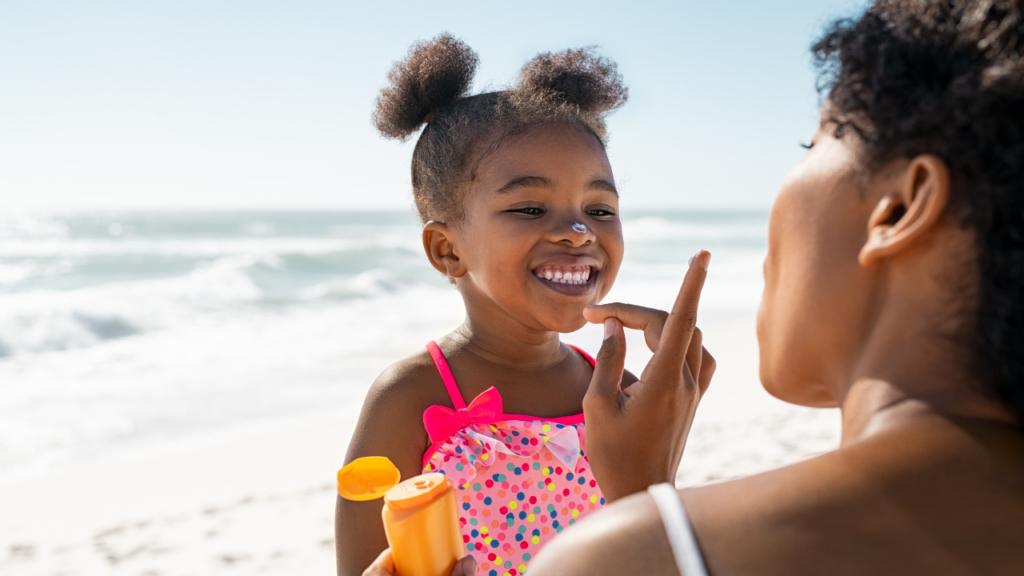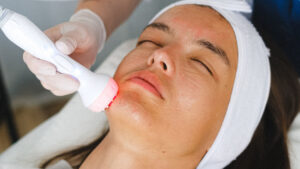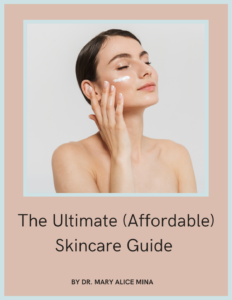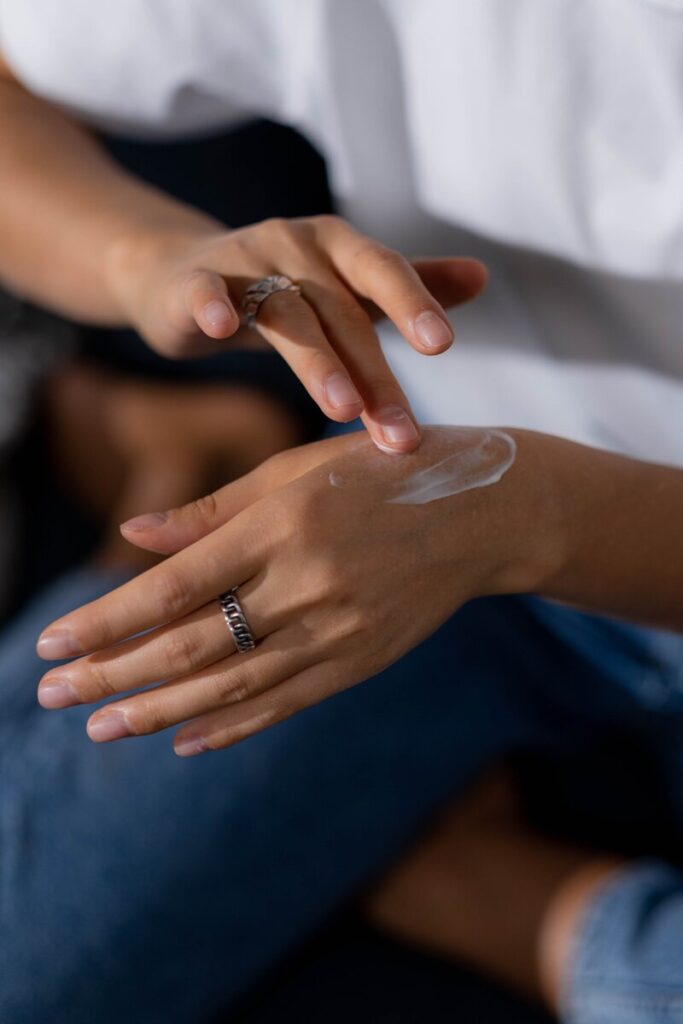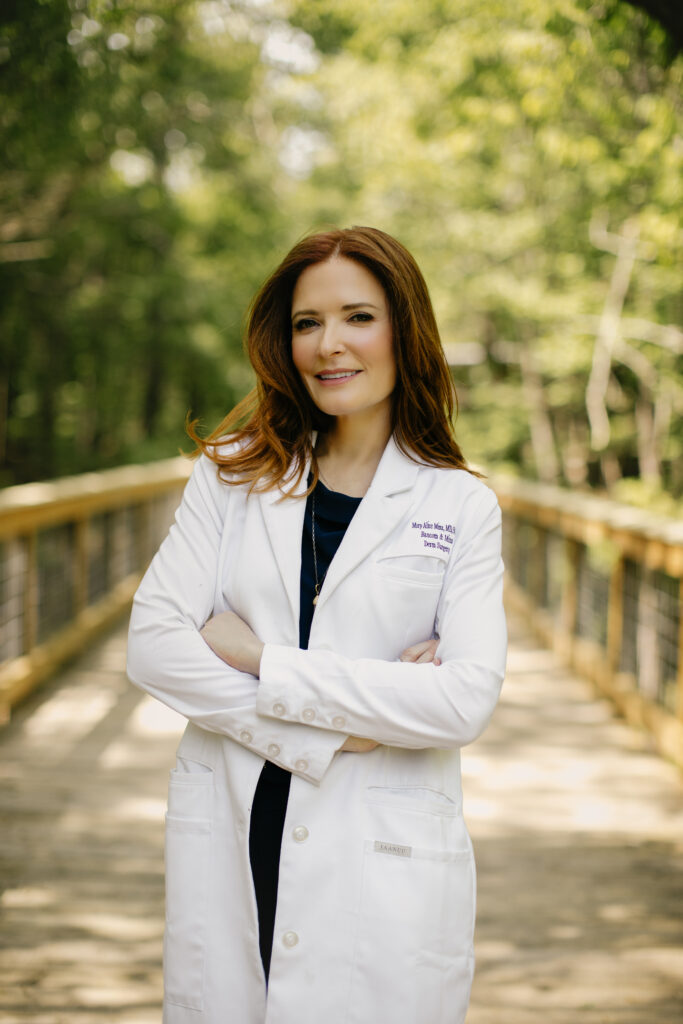It’s no secret that navigating the world of skincare can be overwhelming, especially when it comes to our little ones. As a dermatologist and a mom, I’ve heard my fair share of myths and misconceptions about pediatric skincare.
Parents want nothing but the best for their kids, but separating fact from fiction isn’t always easy. That’s why I’m here to set the record straight. Join me on the blog this week as I debunk the top 5 pediatric skincare myths that I come across regularly. And I threw in a bonus one just for you!
MYTH #1: You Should Limit Bathing Your Baby, Especially if They Have Eczema or Sensitive Skin
I’ve heard countless parents worry about bathing their babies too often, especially those with sensitive skin or eczema. I get it; we’ve been told for years that frequent baths dry out the skin. But here’s the truth: frequent bathing is safe for sensitive skin and recommended! Back in the day, our harsh soaps and detergents contained a lot of surfactants that could be very drying to the skin, especially without immediate moisturization afterward. When the skin isn’t washed, issues like cradle cap can occur, and bacteria and dead skin cells can collect in skin folds.
Let me introduce you to the soak and smear method! Here’s how it works: Start with lukewarm water, especially for a tub bath with immersion (always supervised, of course!). As your baby enjoys the bath, their skin will absorb the water into the stratum corneum, causing it to expand. As soon as bath time is over and your baby is out of the tub, it’s time for the ‘smear’ part. Quickly apply a gentle moisturizer all over to lock in that moisture. Remember, using a gentle cleanser is safe even with sensitive skin, but it’s also ok just to use a cleanser in the groin area. With the soak and smear method, your baby’s skin will stay soft, hydrated, and healthy!
Myth #2: Eczema (Atopic Dermatitis) Is Caused by a Food Allergy
Reality Check: It’s a Skin Barrier Disorder
This one hits close to home for many parents. While children with eczema are more prone to food allergies, the food allergies are not causing the eczema or flaring it. Instead, eczema is first and foremost a disorder of the skin barrier and due to a deficient or abnormal protein called filaggrin that makes the skin barrier unable to hold in moisture. When children cannot retain water in the skin, the skin barrier becomes dry, damaged, and prone to infections, inflammation, and something known as epicutaneous sensitization—> more on this below!
So what is epicutaneous sensitization? Let’s break it down! When food proteins like peanuts are present on your hands and you touch your baby, the damaged skin barrier allows the peanut protein to be taken into the skin and presented to your baby’s immune system triggering an immune response. This isn’t a true food allergy, but can ignite an itchy, red rash on the skin making the eczema worse. We now know that early introduction of these proteins via the gut allows our body to learn how to process these foods correctly. And can potentially reduce the incidence of food allergies.
A true food hypersensitivity allergy does not manifest as a rash of eczema; rather, your baby may experience nausea, vomiting, and the development of hives on the skin. Instead of imposing a limited, restrictive diet for your child with eczema, seek guidance from your physician and prioritize addressing the skin barrier for eczema management
MYTH #3: Products labeled as ‘BABY’ are always safe for your child and the best choice for your child.
I wish it were true that products labeled ‘baby’ were always the safest choice. Unfortunately, this isn’t the case. The term ‘baby’ on skincare products is often a marketing gimmick and isn’t regulated. Here’s what I look for when choosing products for my own children:
- Fragrance-Free: Always opt for fragrance-free products. ‘Unscented’ can still contain fragrances to mask odors, which can be irritating.
- Avoid Essential Oils: Essential oils, like lavender, are common allergens in children. They may smell nice, but they can cause skin reactions and lavender oil is one of the fastest rising allergens in children under 5 today!
- Hypoallergenic: Choose products labeled as hypoallergenic to minimize allergic reactions. This means they’re less likely to cause an allergic response.
Being a savvy shopper means looking beyond the label and understanding what’s truly best for your child’s skin.
Myth #4: Children do not need Sunscreen
Absolutely not! Children 6 months and older can safely wear sunscreen. As a dermatologist and mom, I can’t emphasize enough the importance of protecting young skin from harmful UV rays. I recommend mineral-based sunscreens for children, given their higher surface area to weight ratio. Look for zinc oxide or titanium dioxide as active ingredients. Remember, sunscreen is just one component of sun protection, so be sure to keep your baby in the shade, wearing a hat, and sun-protective clothing. These measures add extra layers of protection. Make applying sunscreen fun; I let my older kids use stick formulas or a foundation brush for liquid sunscreen. It turns a chore into a fun activity!
Myth #5: Tweens and teens can use adult skincare products
Tweens and teens have unique skincare needs. While the basics of skincare—gentle cleanser, moisturizer, and sunscreen—remain the same, they don’t require anti-aging products. Instead, encourage regular sunscreen use by offering fun options and letting them choose products they like. Avoid serums and exfoliants, as these can be too harsh for young skin; instead stick to the basics.
Let’s not forget about our tween and teen boys. It seems like skincare is often marketed more towards girls, which can make boys feel left out or even embarrassed to talk about it. It’s important to check in with your son about his personal hygiene habits. Are they using shampoo and soap correctly, including underarms and groin? They might need a little guidance and reassurance, even if they don’t always ask for it. Let’s make skincare easy and approachable for everyone!
And here’s a bonus myth bust just for you…
MYTH #6: ‘Natural’ products are always better for your child.
Unfortunately, nope! The beauty and wellness space is unregulated, and companies can claim and list many things on their products that simply aren’t true. It’s unbelievable but it happens all the time!
Take the classic example of poison ivy—a completely natural plant that, when exposed to its oil urushiol, can cause a wicked rash! Surprisingly, mango pit and peel also contain urushiol. When mango extract is used in various skincare products, it can sensitize people to poison ivy in the future. Moreover, there is little to no testing on whether botanical extracts actually benefit the skin. We definitely need more responsible labeling of skincare products and stricter regulations on what marketers can claim and promote. Instead of solely opting for ‘natural’ products, look for tried-and-true, safe, and tested active ingredients and products for your most radiant skin.
Skincare information and misinformation are rampant, and myths surrounding skincare for babies and children are no exception! But with the right info, you can choose what’s best for your child’s skin. Remember, it’s always a good idea to talk to a dermatologist for personalized advice and treatment.
Don’t forget to tune into this week’s podcast episode where Dr. Sheilagh Maguiness busts these common skincare myths and discusses how to best care for your baby’s skin!
Find Dr. Maguiness here:
https://www.instagram.com/dr.sheilagh.m/
https://www.tiktok.com/@drsheilagh
Stryke Club- Dr. Maguiness’ Skincare Line for Teen Boys
A new podcast episode drops every Monday!
For more great skin care tips, subscribe to The Skin Real Podcast.

